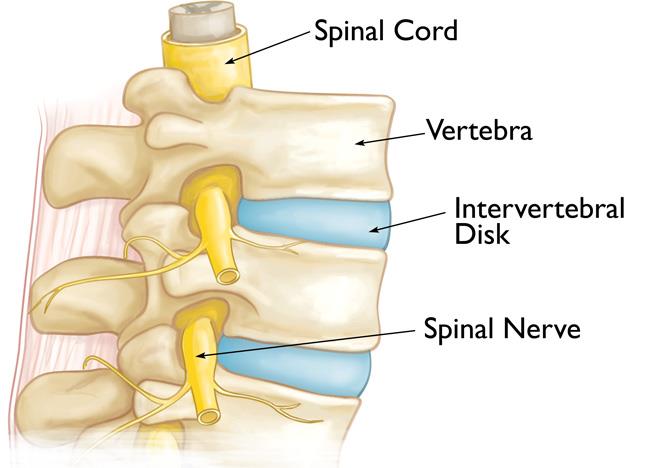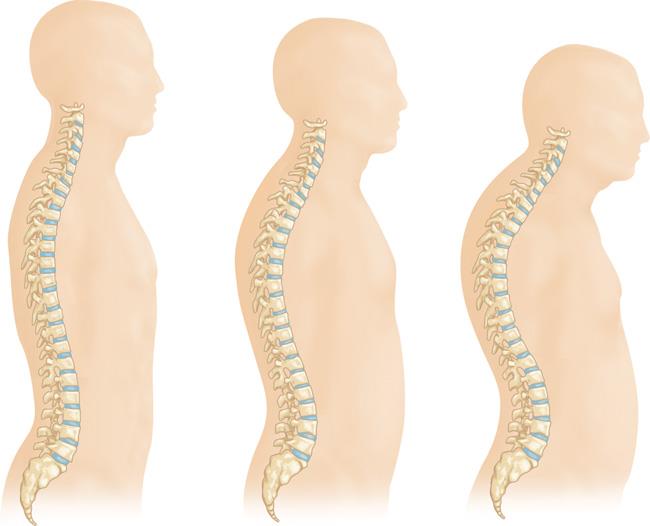Musculoskeletal Disorders
Back & Neck
Foot & Ancle
Hand & Wrist
Hip & Pelvis
Knee & Lower Leg
Athletic injuries
Osteoporotic Spine Fractures
Osteoporosis is a disease in which bones become very weak and more likely to break. It often develops unnoticed over many years, with no symptoms or discomfort until a bone breaks.
Osteoporosis is a disease in which bones become very weak and more likely to break. It often develops unnoticed over many years, with no symptoms or discomfort until a bone breaks.
Fractures caused by osteoporosis most often occur in the spine.
Not all vertebral compression fractures are due to osteoporosis. But when the disease is involved, a fracture is often a patient’s first sign.

Normal spine anatomy.
Osteoporosis is a natural phenomenon that occurs with aging. As we get older, our bones weaken.

As osteoporosis progresses, the vertebrae weaken and become flatter. This can cause a severely rounded back (“dowager’s hump”).
Treatment
Nonsurgical Treatment
Fortunately, most people who suffer a vertebral compression fracture get better within 3 months without specific treatment to repair the fracture. Simple measures, such as a short period of rest and limited use of pain medications, are often all that is required. In some cases, patients are instructed to wear a brace to restrict movement and allow the vertebral compression fracture to heal.
It is important to note that when the fracture heals, the bone does not reform into its original rectangular shape, but if it is healed, it will not cause further collapse.
If your doctor has also diagnosed osteoporosis, you are at increased risk for additional vertebral compression fractures and other fractures, such as to the hip and wrist. Your doctor will address treatments for bone density loss during this time.
Surgical Treatment
If you have severe pain that does not respond to nonsurgical treatment, surgery may be considered.
In the past, the only surgical options available to patients with vertebral compression fractures involved extensive procedures. Today, vertebral augmentation procedures offer a minimally invasive alternative.
The two types of vertebral augmentation methods available are kyphoplasty and vertebroplasty. The best candidates for these procedures are patients who suffer severe pain from recent vertebral compression fractures. If you are a candidate for kyphoplasty or vertebroplasty, your doctor will talk with you about which procedure may be better for you based on the type of vertebral compression fracture you have.
Kyphoplasty.
In a kyphoplasty, the surgeon inserts a needle into the fractured vertebra using an X-ray for guidance. The surgeon then inserts a small device called a balloon tamp through the needle and into the fractured vertebra. The balloon tamp is inflated from within the vertebra, which restores the height and shape of the vertebral body. When the balloon tamp is removed, it leaves a cavity that is filled with a special bone cement that strengthens the vertebra.



 Ελληνικά
Ελληνικά